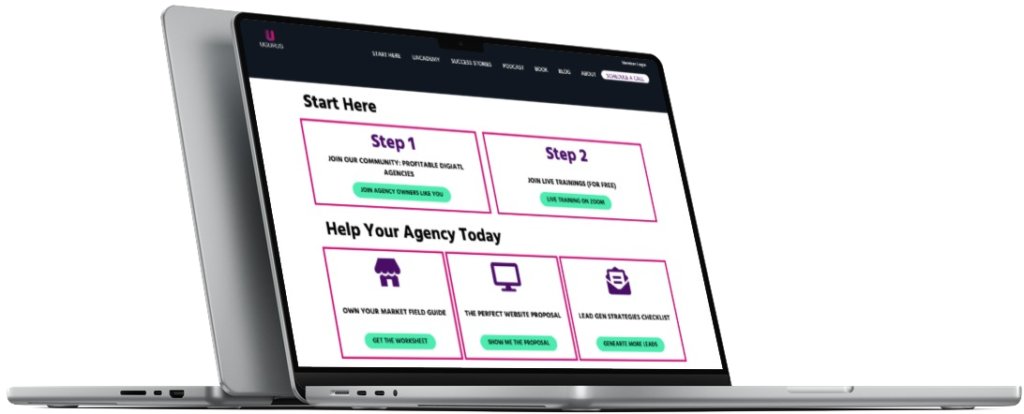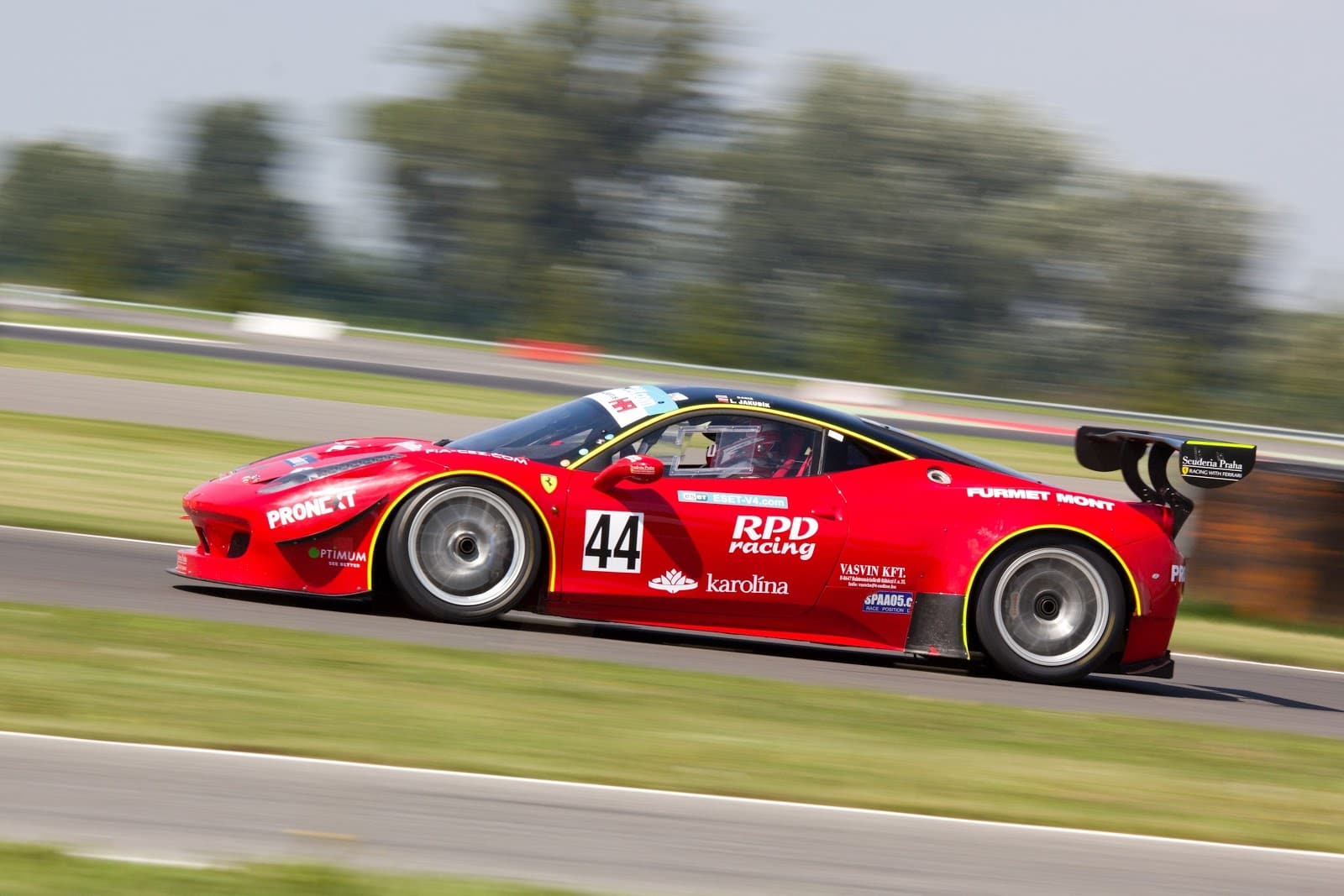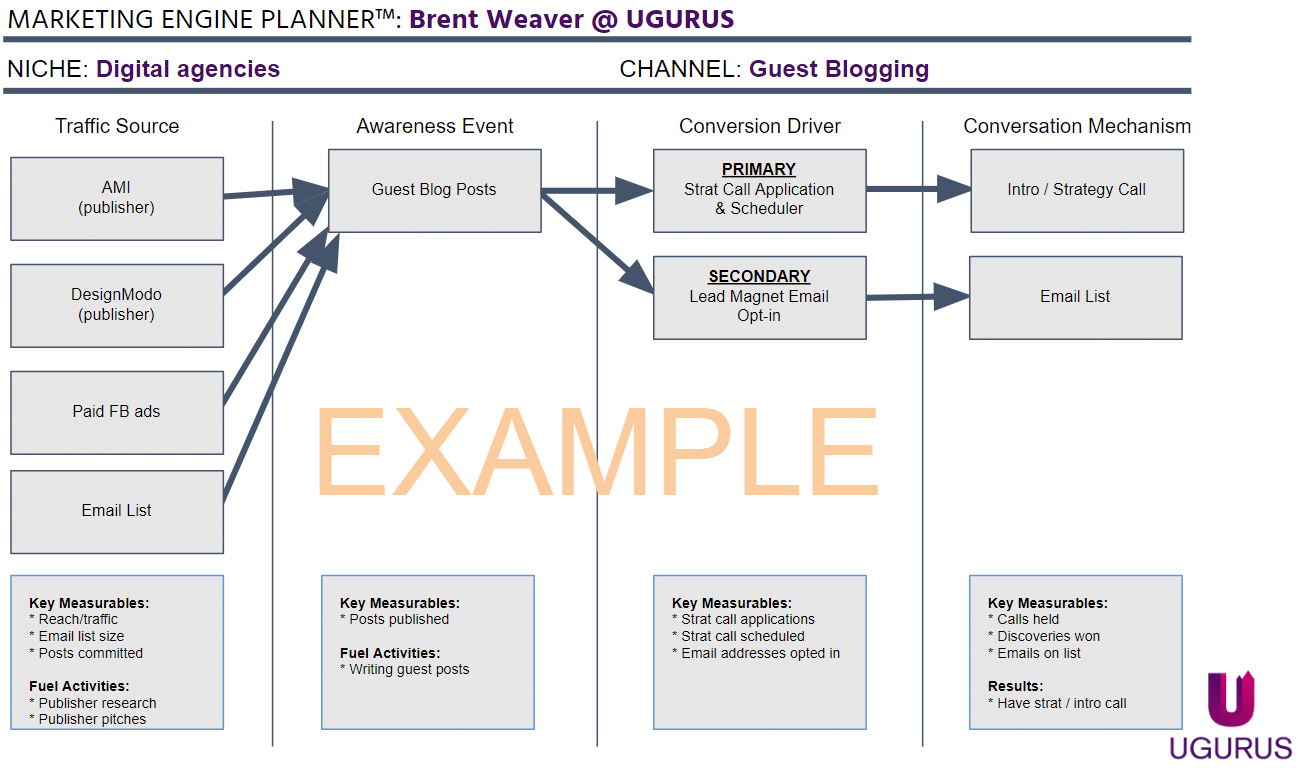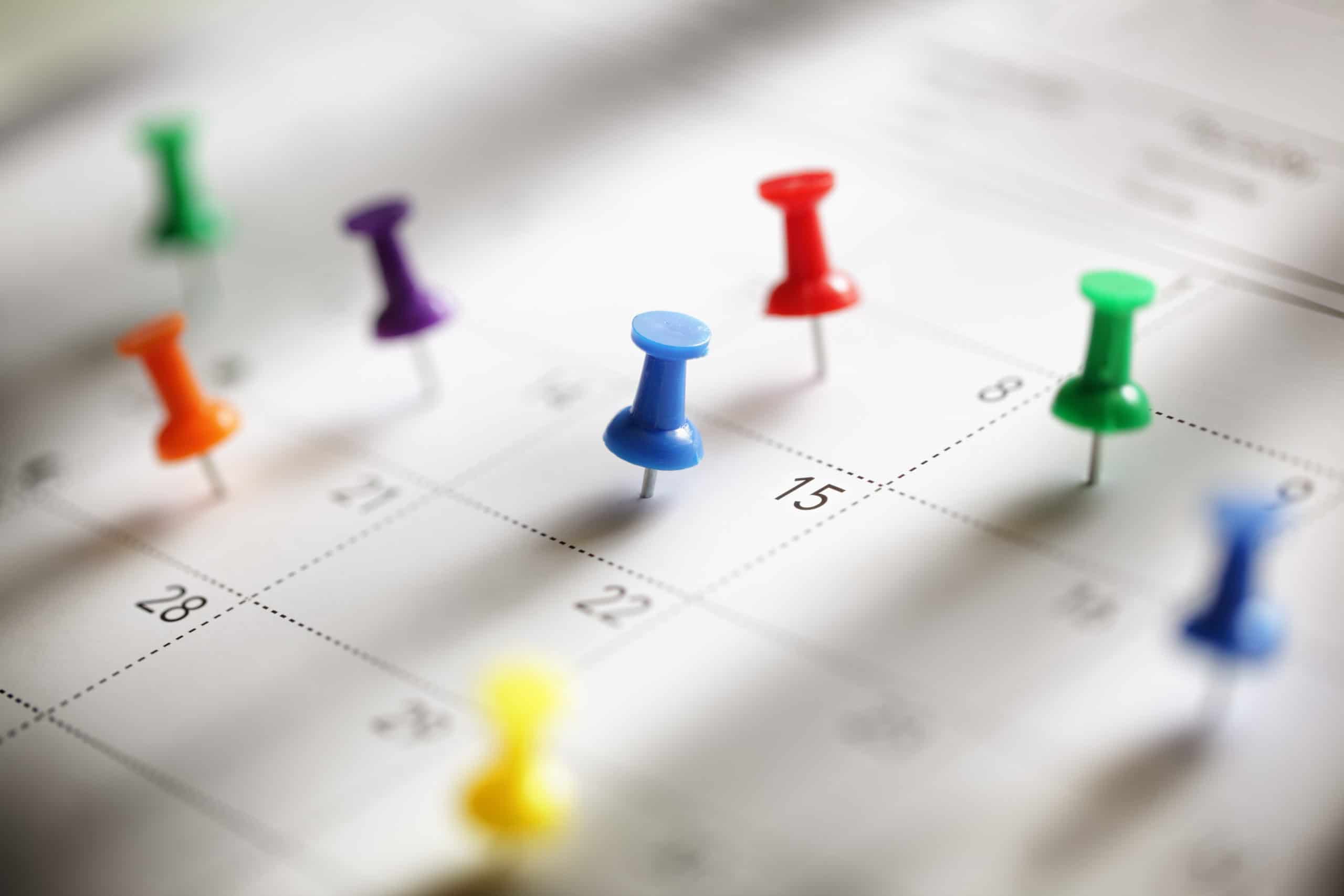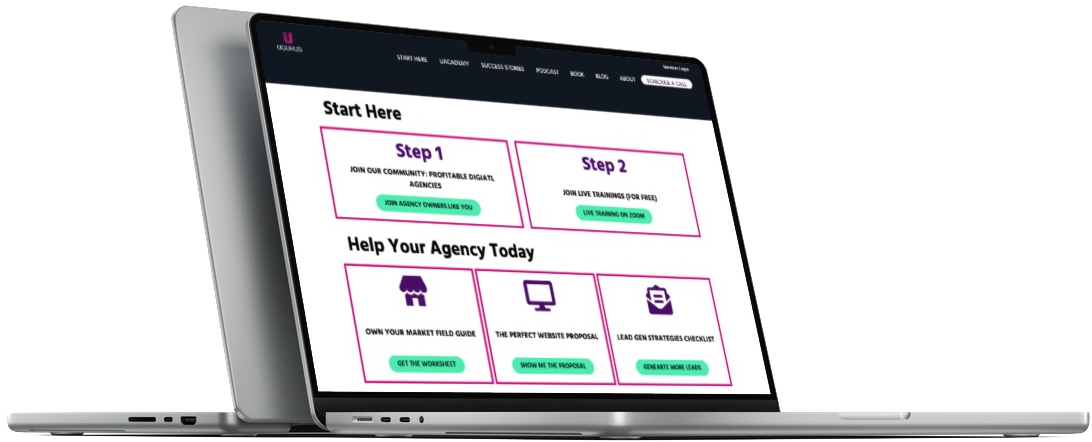For most digital agencies, marketing falls somewhere between the art of spinning plates and a game of whack-a-mole played by an obsessive-compulsive schizophrenic.
“I haven’t posted on Twitter for a while… I should share some articles.”
“I need a Facebook Fan Page, I’ll create that. Hmm. I don’t have any fans. I’ll ask my friends to follow me.”
“Ohh, look! A Chamber mixer this Wednesday, I’ve been thinking about joining, I’ll register for that.”
“I read a recent article about cold calling, I’ll call some businesses in my area… but how will I organize the thousands of contacts I will call… I don’t have a CRM. I NEED a CRM. This demo looks interesting… I wonder if I can schedule an appointment with them. Great, next Thursday works for me. I’ll wait to call until I have that system all set up. This is going to be epic.”
(It won’t.)
“I’m beat, I think I’ll go get some Pho.”
If you think I’m trying to give you a hard time, I’m not. The above is pretty much an internal monologue of how I used to think before I became an ardent student of building marketing systems for my own business. I’ve spent the better part of the last seven years training other agency owners how to leverage those systems.
I can confidently say there’s a better way.
Referrals Don’t Scale
You probably get most of your clients through referrals and word of mouth. This is a beautiful way to get new clients. When they call you, they are warm, they trust you, and the likelihood they will become a client is high.
With referrals, your sales process can be terrible, and you’ll still get them as a client.
We all love referrals. That is until they dry up. The random, unpredictable intake halts. Maybe it’s the holidays and folks aren’t talking about you because they’re on vacation. Maybe it’s a full moon and the lunar forces are tilting the oceans favor against you. Who knows.
Any agency that finds themselves saying, “We get our business through referrals and word of mouth,” I say, “You just admitted that your business is NOT scalable, NOT predictable, and NOT under your control.”
When my pipeline of referral leads dried up, I took on the behavior of a junkie looking for a fix. All of a sudden I would go ALL-IN on a variety of disconnected marketing activities. I would:
- Write a post for our blog
- Post six times to social media in a week
- Cold call half of the A’s from an associations directory
- Attend three random networking events
- Pitch me as a speaker to a handful of conferences organizers
Then a referral would come in. Another. Neither as the consequence of any of my frantic marketing efforts.
“Ahhhhhhhhh…”
I’d kick my feet up on my desk. Finally, I can stop all this senseless behavior. Back to business. I’d focus my efforts on selling those clients. We’d get a couple of deals in the pipeline. I’d put out some other fires in my business. We’d ink a couple of new contracts. I’d follow up on some old deals, get movement on one, a third deal would close. Cash would flow in. I got my fix. All is good in the world.
Until a month later when I started to notice our pipeline drying up again.
If this sounds more like I’m describing you than me, it’s time for you to go to referral rehab my friend.
Introduce the Marketing Engine
I started to unpack and reflect on all our past marketing initiatives. I looked at what campaigns drove customers or email subscribers to our list. What I realized was that each campaign followed a basic model. I call this the Marketing Engine Model.
- Fuel Source = Traffic Source
- Fuel Activity = Awareness Event
- RPM = Conversion Driver(s)
- Speed = Actual Sales
This might look similar to a standard marketing funnel steps of traffic, awareness, interest, conversion. But I want you to think differently. I want you to think of this more like a marketing racecar than a pouring utensil.
Race cars need fuel. They burn that fuel and create energy measured in RPM’s. When RPM’s are unleashed on the gearbox, and you’re in gear, you get movement. When we put fuel into the car, we’re not after RPMs, we’re after speed. We’re trying to get from point A to point B.
Point A to B for agencies is going from no leads to signed clients. And being able to do that with some predictability seems elusive to most.
When I first start working with agencies struggling with this problem, they would show me what they had set up to market their agency. They would have excellent websites. They had landing pages. Opt-ins. Downloads. All sorts of goodies that they spent hours and hours creating. They would think they are doing what it takes to get leads. They believe they are supposed to build a funnel to get leads. And they have a funnel after all right?!
Then why no leads?
Because they are building incomplete engines. And they aren’t fueling them. You need to develop a Marketing Engine for your business to drive consistent and predictable leads and customers.
- You need a fuel source (audiences that you can tap into).
- You need fuel activities (routine investments of time or money to get your message in front of those audiences).
- You need an engine to convert fuel into RPMs (a system to turn awareness into a conversion – not just leads, but actual conversations).
- You need a gearbox to turn RPMs into speed (sales conversations that drive sales, not just tire kickers).
Looking at Today
When my clients come to me with a leads problem, I first look at what they’re currently doing. I try to see if we have a Marketing Engine in place that’s either incomplete or broken. What I’m looking for are the core components. Do I have a clear line of sight from the fuel source to speed? Can I see it happen? If not, we need to fix the engine, then start fueling it up.
For instance, let’s say you have a Facebook Fan page for your business. You’re posting three to five times a week. You’re hoping that this activity will keep you in front of potential clients. In fact, you often feel guilty if you don’t post. In this scenario, I see two immediate problems.
- There’s little to no fuel source (unless you have copious amounts of followers from your target market).
- There are no RPMs. No conversion driver and no history of this activity leading to sales conversations.
In this example, it’s just like you are pouring gasoline on the ground next to your car. Wasted marketing fuel.
So stop feeling guilty for not posting.
Or, if you’re going to keep posting, get clear on how that activity is going to lead to a conversation. Are you linking to content that has a CTA? Do you even have an audience yet? What can you do to build one? And I mean a *real audience* that is full of your target prospects.
Example Marketing Engine
Let’s take a moment to look at a Marketing Engine in action.
As you can see with this example, there is a clear line of sight from my fuel sources to a sales conversation, and sales earned for my business. Establishing a clear line of sight and making sure there are steps and mechanisms between each stage to drive to the next is the first significant work you must do to build your Marketing Engine.
The next, and maybe more critical step is to identify fuel sources and drive as much fuel activity as you can afford until you top your engine out. The goal should be to build fewer, higher performing engines, than more, lower performing ones.
From my example, if you build an engine that drives email opt-ins from expert guest posts, and you can successfully convert those email opt-ins with a multi-part email series to a scheduled call, you should attempt to scale and optimize that Marketing Engine before trying to build another Engine. If you can successfully earn a customer that is worth more than it costs in time and money to publish (or advertise), I’d want to see what the upper limit of that Engine is before I create another.
“How much fuel (i.e., money and time) can I put into this engine before it redlines?”
So you published a few times, and you got some customers. What would happen if you became a guest publishing machine? Could you get published monthly? What about weekly? What about daily? What systems and processes and contractors could you put in place to fuel your engine?
Looking at the Data
Once you build your Marketing Engine, your focus should shift from making more Engines to monitoring and fueling the Marketing Engine you’ve created. To keep things simple, you should track three to five simple metrics on your scorecard.
Have at least one number for each key part of your engine.
- Fuel = The activity that drives your engine. The input. It could be ad dollars, guest posts written/published, guest podcasts booked, conference keynotes booked, etc.
- RPM = The activity that shows your engine is spinning. The revs. It could be webinar attendees, lead magnet pageviews, attendees in the audience, etc.
- Speed = The activity that shows your engine is driving results. You have forward movement. It could be email opt-ins to your list, strategy calls booked, contact form inquiries, or ultimately – sales.
In my guest posting example, that would look like:
| Initial Metrics | Mature Metrics |
|
|
As your Marketing Engine matures, you could simplify it further and look at posts published, strategy calls booked, and clients earned.
If you were advertising a webinar funnel on Facebook, it would look something like this:
| Initial Metrics | Mature Metrics |
|
|
Just like in our previous example, over time, you could simplify this down to ad dollars spent, applications received, and clients earned.
The beauty of this idea is that once established, you should now focus on adding fuel to your engine and making sure your headed in the right direction by keeping an eye on your gauges.
I would rather see someone be reckless with the amount of fuel they put into their engine – possibly wasting ad dollars or over-publishing – versus the alternative of choking their engine to death with little or no activity. You can always optimize later once you have useful data and tracking.
Tinker over Reinvention
Once you have an engine in place, it’s better to tinker and scale than to build more engines. What I encourage my students to achieve is peak performance on any given engine before they go off and create another Engine. Scaling an Engine requires sharp focus – avoidance of shiny marketing objects – and implementation of a 90-day strategic planning ritual.
There is an enormous sunk cost in setting up a new engine. A lot of agencies do this type of work for their clients: create websites, landing pages, or marketing funnels. I see them get into the habit of building more and more engines for themselves, but never actually putting them to use. They are in build mode, not fuel mode. The building is the comfortable part. Fuel activities (wasting money on poor performing ads or getting rejected by publishers) are often uncomfortable.
Instead, once you finish your Engine, you should focus on letting it rip. Then once you have motion, start tinkering with it. But remember, race cars race on the track, not in the garage.
Let me give you an example of how this played out for one of my clients. For confidentiality, we’re going to call her Samantha. We built her engine around guest publishing because she had more time than money to spend, so ads weren’t a great starting point.
She writes a high-quality guest post for a publication in her market. It gets published, and people click on a few of her links that go back to her websites. She gets a couple of calls scheduled on her calendar booker, and then one person signs up for her service.
- Fuel source: publication
- Fuel activity: Writing and publishing her post
- RPM: Clicks to her website and strategy calls booked
- Speed: New client
Catching on?
In Samantha’s case, the big time investments upfront were:
- Building her website in a way that it appealed to the problems of her target market
- Setting up a landing page with a call to action and calendar booker
- Adding open blocks to her calendar so people could book
- Writing emails to various publishers
- Building a relationship with a publisher
- Coming up with a writing style/format that is good enough to get published in her niche
- Writing the actual post
With one guest post in her pocket, future publishing would get more comfortable. Publishers operate with a certain level of herd mentality, and when one screens an author, others have an easier time accepting them.
At this point, Samantha has an engine that works. Instead of getting distracted by Facebook Ads – a random suggestion from an entrepreneur friend, she focuses on adding more fuel to her Engine. Instead, Samantha writes another guest post. She shares her published piece with the other publishers that initially turned her down and gets her new post accepted by a different, more popular site.
After a few weeks, she gets a half dozen articles published. She sets a goal on her scorecard of writing a new guest post every week. She forgets about every other marketing activity until she finds herself at a point of diminishing returns. Considering the size of her market, the number of publishers available, and each’s capacity to accept posts, her one post per week was far from the top end the market could support.
She gets into a rhythm. She starts to track how long it takes to write an excellent guest post. Samantha finds that it takes about three hours to write, an hour to edit, and an hour to pitch, publish, and share. All in, about five hours a week which is her current capacity to market with her other responsibilities in the business.
After a few months, Samantha is blown away by the consistency in her business. She writes, schedules calls, and earns new customers. Samantha figures out systems to handle the new demand, and now her business is growing fast and is getting used to the new levels of demand. She wants more, but she can’t spend more than five hours per week on marketing. The good news is that she has a lot more revenue coming in and can now start to trade time for money.
Since she’s built relationships for publishing and email templates for letting them know when she has new content, she decides to delegate that activity to a virtual assistant. This cuts an hour off her five hours to publish an article. Samantha then hires a professional editor from Upwork which costs a bit more than a virtual assistant but cuts another hour from her time. The last optimization is hiring a ghostwriter to write from dictation.
Over a few weeks, she creates documentation, spreadsheets, and adds a few people to her team. The personal time she spends on each post is down to about an hour from idea to delegation. Her production capacity goes from a single post per week with her five hours to up to five posts. She lets it rip.
A couple of months later she’s posting five quality articles to websites in her niche every week. The groundswell of traffic is incredible. This creates other problems. She needs to hire a full-time sales rep to deal with the volume of strategy calls. She needs to hire additional production staff to deal with the amount of work. She also finds that publishing five posts per week is starting to redline her market.
She’s tapped every publisher and is finding that there is only a market for four guest posts per week. She starts to publish the fifth on her website and now sends a weekly email to her list highlighting the guest content she publishes as well as a direct link back to her site which now has a decent following and regular traffic.
Samantha’s momentum gets multiplied because her content over time improves in quality and the top publishers are starting to feature her content regularly. She starts getting organic inquiries to write for other publishers, podcasts request to interview her, and an upcoming conference asked her to speak at their event. She went from barely having any leads to becoming an authority in her market with a single Marketing Engine that was performing.
This success all happened in less than a year.
In the End
When your marketing efforts shift from plate spinning to a high-performance machine, life gets more straightforward and more enjoyable. You aren’t wondering how you’ll get clients anymore. You move from frantic flailing to steady executing.
You start to wonder, how fast can this thing go? What if I put more fuel into it… could our business even handle that?
Marketing time wasters begin to fall away. You start to tinker with the performance of your engine. You begin to set higher and higher benchmarks for what you want to accomplish in the marketing and sales front.
Back when I was spinning marketing plates, I could never have dreamed of building a marketing system that could drive over $300k in business in a single month. But then it happened. And I was fueling a single engine that drove those results. I knew I was going to get $300k because that is what the leading numbers told me. And I planned for it.
With proper Marketing Engine thinking, you can start to shift your marketing leverage from time-based (putting in hours as fuel) to money-based (putting in dollars as fuel).
You know why I like money as fuel? It’s scalable and – if done right – is a renewable resource. Time is not.
Money can buy you other people’s time, and in that case, you can also scale time.
Building a Marketing Engine simplifies your business. I love simple. Business is already hard. It’s better to be simple and hard than complicated and hard. At least with simple and hard, we have a fighting chance.
You also gain clarity. You start to learn what your customer acquisition cost is, what your pipeline looks like, and predictability around leads and customers becomes a thing.
You open yourself up to scale. And scale is the white rabbit of business that takes you down some interesting holes that go deep into new territory.
If you’re tired of spinning marketing plates, consider leveling up your game. Build an engine, fuel it, and see how fast you can get that racecar to go.
GET YOUR FREE AGENCY ACCELERATOR PACKAGE
